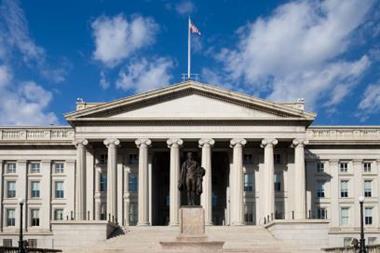What now for the commerical insurance market?
‘When America sneezes the rest of the world catches a cold.’ That phrase was popularised by economists in the aftermath of the stock market crash of the 1930s. Now we are seeing what happens to the world economy when US markets get a serious bout of the flu.
What began as a liquidity crisis in the banking sector has spread its sickness to the wider economy. Central banks around the world have been forced to intervene dramatically. At times the intervention has been coordinated and timely, such as when interest rates were cut simultaneously around the world, or when the Benelux governments joined forces to rescue Fortis, the distraught banking group. European governments have also reverted to protectionism at the expense of market stability. As when Germany’s Chancellor, Angela Merkel, committed to a coordinated response at a meeting of European leaders, then turned around and said her government would guarantee 100% of savings in German depositories. That left European savers confused and wondering if their governments would do the same. In the end many central bankers were grudgingly forced to make similar commitments.
Banks are not the only financial institutions to be teetering on the brink of the abyss. The wider insurance industry seems to be doing OK, although plummeting stock markets around the world look to be signalling the end of cash flow underwriting – at least for the time being. One institution has not been so lucky. The nationalisation of AIG by the US government took the commercial insurance market largely by surprise. One minute the company was triple A rated, the next it was scrabbling around for cash to stop it going under, and all because of the unquenchable risk appetite of a single US division, AIG Financial Products. Or so we are told.
Why was there no warning? The rating agencies have proved themselves again to be incapable of providing a warning system. They have been, rather harshly, branded worthless. But in truth they were never more than one of the tools companies could use to test the claims-paying ability of insurance partners. They may not have seen the problems coming because they were not paying attention to all of the group’s activities. They had their eyes trained on the insurance side of the business and that looked to be healthy. The real question is why was a highly regulated institution like AIG allowed to diversify into the largely unregulated CDS market?
The problems seem to be linked to laissez faire capitalism. The markets which were the origin of the crisis were opaque. This may lead the authorities to conclude that what is needed is more disclosure. That may not be a bad thing. But there is no guarantee that stricter rules would have prevented any of the problems in the large financial institutions. These were the people doing compliance and ticking all the right boxes. What they were not doing properly was some pretty basic risk management.
Now taxpayers are left to pick up the pieces. Governments have injected trillions of dollars in the hope of diffusing some of the toxic debts floating around the system. Meanwhile, commercial insurance buyers are left to ponder the future of a once mighty and reliable insurer. Their response could be summed up as cautious. And rightly so, AIG’s problems continue. Two of its former executives, Martin Sullivan and Robert Willumstad, were marched up Capitol Hill to face a grilling from Congress over the debacle. And continued strife in its securities lending division forced the group to go back to the Federal Reserve for another handout. But there has been no panicked rush to leave AIG and look for alternatives – limited as they are.
For its part, AIG, has engaged in a frantic PR campaign to assure clients that the reasons they partnered with it in the first place are all still good reasons to stick with it. The commercial insurance arm is ring-fenced and safe, it says. The expected asset sell-off has begun. AIG’s stake in London’s City Airport was one of the first on the chopping board.
Whatever happens, a weakened AIG is bad news for buyers. And a takeover by one of the other global insurers could be disastrous in terms of limiting buyers’ choice, particularly in the realm of global insurance programmes. As one risk manager said: ‘Going to the board and explaining why we should stick with AIG is going to be a difficult conversation.’
















No comments yet